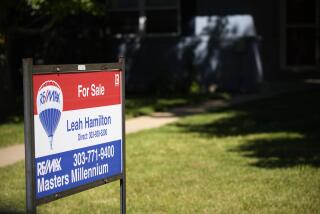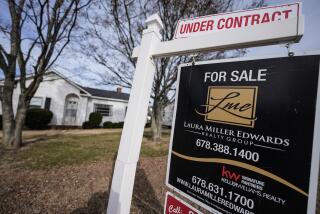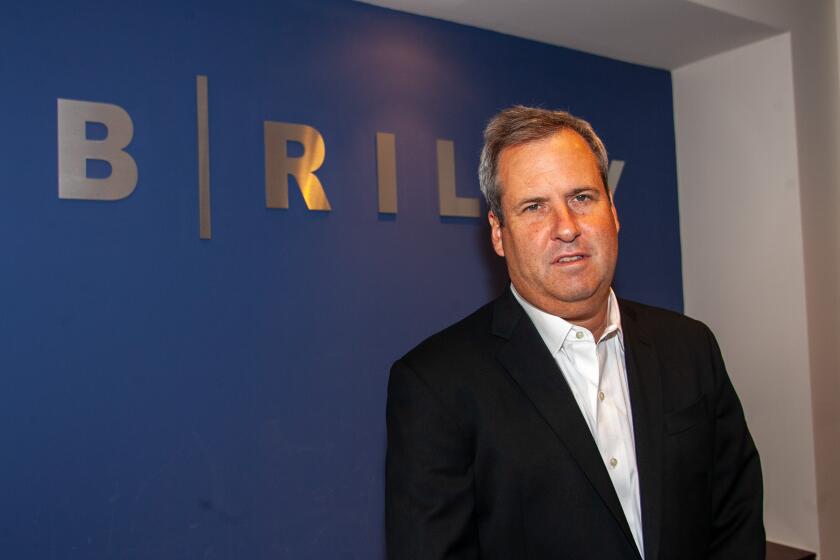Money Problems Don’t Translate Into Lower Rates
QUESTION: My partner and I bought a condo for $170,000 in 1991 when the California real estate market was at its peak, borrowing $153,000 at 9.75% for 30 years. The condo is now worth about $85,000. When my partner was unfairly fired early this year, we felt we had a compelling hardship and stopped making the payments.
Our plan was to force our lender into a loan modification, perhaps even with an outright principal reduction. But the loan is now owned by Freddie Mac, which says I am contributing too much to my 401K plan, and refuses to reduce the rate or to forgive past interest due. Is there any escape from this nightmare?
ANSWER: I doubt that anyone can help, except you, but you badly need an attitude check. Your partner is not the only one to lose a job. Others have lost jobs for reasons not their fault and have faced a decline in their property’s value.
There is no “compelling hardship” clause in your contract, with the lender giving you the right to forgo the payment of interest and have the principal reduced.
If you were the lender, how would you feel if the borrower pleaded inability to pay but had enough money for a substantial contribution to his retirement account?
At this point, you can either default, with all its consequences, or you can go back to the lender for another try. For it to succeed, you have to bring two things to the table:
The first is a different attitude, reflecting the reality that the lender didn’t cause your problems.
The second is a detailed budget showing the maximum amount you can afford and are prepared to pay, including money shifted out of 401K contributions. You then just might have a chance to avoid default.
Mortgage Rate in Mexico Is Much Higher Than 5%
Q: A friend from Mexico says she has a home loan with an interest rate of only 5%, even though the inflation rate there is much higher than that. Is there any way she can be right?
A: Mexico is one of a number of countries suffering from inflation that have experimented with some offbeat types of mortgages such as the PLAM, or the price level adjusted mortgage, and the DIM, or dual index mortgage.
The interest rate on the DIM is not really 5%, as you suspect, but much higher--consistent with market rates in Mexico.
Further, the rate earned by the lender is adjusted periodically (it is indexed) in line with changes in market rates. From the standpoint of the lender, the DIM is much like an adjustable rate mortgage, or ARM, as we know it here.
From the standpoint of the borrower, however, the DIM is nothing like an ARM. The initial payment is relatively low, consistent with what the borrower can afford.
For example, it might be calculated at 5% as noted by your friend. But while the payment may be calculated at 5%, the rate due the lender could be 25% or more, the difference being made up by “negative amortization”--increases in the loan balance.
Typically the loan balance on a DIM will rise for many years before it begins to decline.
Meantime, the payment made by the borrower changes every month in line with changes in an index of wages and salaries. Having the borrower’s payment tied to a wage and salary index and the lender’s income tied to an interest rate index is what makes it a dual index mortgage.
The expectation is that the borrower’s payment will eventually rise to the point where it fully covers the interest and the balance will begin to decline. There is only one problem.
If wages and salaries in Mexico don’t keep up with inflation, the payments made by borrowers aren’t going to rise fast enough for this to happen. At the end of the terms, there will be unpaid balances.
Figuring Origination Fee Into Loan Cost
Q: After shopping rates and points at several lenders, I discovered that one of them charged an origination fee of 1 point, one charged a fee of 1/2 point, and two did not charge such a fee. Am I correct that I should add origination fees to points to make valid cost comparisons?
A: Yes. Origination fees expressed as a percent of the loan are points in disguise. In shopping for a loan, the consumer should always ask the lender for the total of all charges expressed as a percent of the loan amount, including origination fees, and all charges expressed in dollars. The total of these is the relevant number.
Reporting services that publish information on mortgage rates and points do not show dollar fees, but most readers interpret the “points” in these reports to include all charges expressed as a percent of the loan.
This is not the case for lenders who charge an origination fee, however. Such lenders can show lower points, thereby looking better in the comparisons.
Will It Cost More to Use Loan Broker?
Q: I have been advised by one friend to get my loan from a mortgage broker because brokers shop a lot of lenders for the best deals, but another friend says it is too risky, that a lot of borrowers are overcharged by mortgage brokers. Who’s right?
A: They are both right. The trick is to take advantage of the superior service offered by mortgage brokers in scouring the market on your behalf, while protecting yourself against being overcharged.
Mortgage brokers are independent contractors who are free to charge whatever they wish for their services. When problems arise, it is because borrowers usually do not realize what they are paying the mortgage broker until they get to the closing table.
Mortgage brokers make their money by adding a markup to the price quoted by the lender. For example, the “wholesale” price on a particular program might be 7% and 0 points, to which the broker adds a markup of 1 point, resulting in a “retail” price to the customer of 7% and 1 point.
In general, mortgage brokers set the largest markup they can get away with in each deal. An unsophisticated customer who shows no inclination to shop the competition will be charged more than a sophisticated customer who makes clear an intention to shop.
The largest markups are earned on unsophisticated customers who will accept relatively high interest rates. Wholesale lenders will usually offer brokers a side payment, called a “yield spread premium” for high-rate loans.
The way to protect yourself against being overcharged is to insist that the mortgage broker do what every other tradesman does--set the price for the service in advance.
The price should be specified in dollars rather than as a percent of the loan, since the mortgage broker has to do as much work to deliver a small loan as a large loan.
A document containing the following language will do the trick:
“I [Mortgage Broker] herewith agree that the total compensation for my services in obtaining a mortgage for John Doe, including all amounts paid me by Doe and by the lender who provides the loan to Doe, will be $X. If the lender pays me more than $X for the loan, the difference will be used to reduce Doe’s other settlement costs.”
*
Jack Guttentag is a syndicated columnist and professor of finance emeritus at the Wharton School of the University of Pennsylvania.
Distributed by Inman News Features.
More to Read
Inside the business of entertainment
The Wide Shot brings you news, analysis and insights on everything from streaming wars to production — and what it all means for the future.
You may occasionally receive promotional content from the Los Angeles Times.










